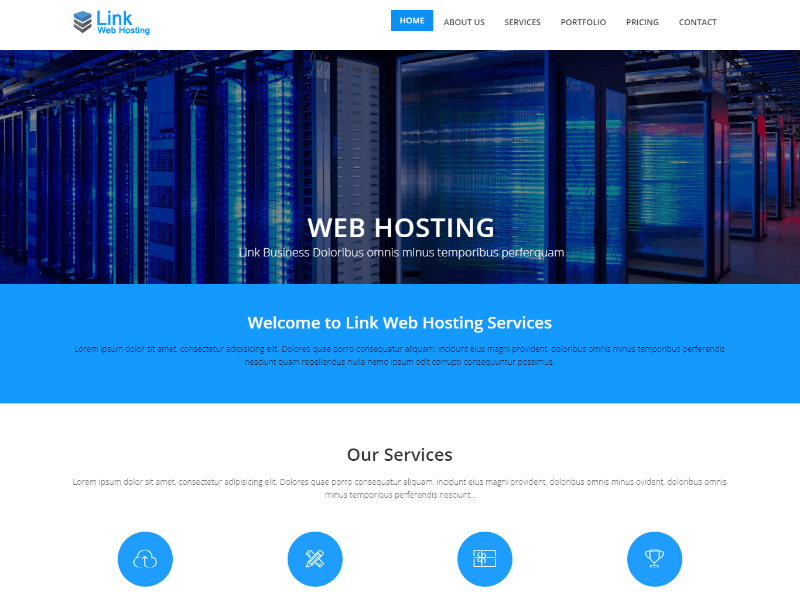Host your website for free sets the stage for this enthralling narrative, offering readers a glimpse into a world where building an online presence is within reach. Free hosting platforms provide an accessible entry point for individuals and businesses alike, allowing them to establish a web presence without upfront costs. This guide delves into the intricacies of free website hosting, exploring its advantages, limitations, and practical considerations.
From understanding the core features offered by free hosting providers to navigating the process of setting up and securing your website, this comprehensive exploration aims to empower you with the knowledge and skills to successfully launch your online venture. Whether you’re a budding entrepreneur, a passionate blogger, or simply seeking to share your thoughts and ideas with the world, free hosting presents a viable option for getting started.
Understanding Free Hosting Features: Host Your Website For Free
Free hosting is a tempting option for website owners, especially beginners. However, it’s crucial to understand the limitations and features offered by free hosting providers before making a decision. This will help you determine if free hosting is the right fit for your needs.
Key Features Offered by Free Hosting Providers
Free hosting providers typically offer a basic set of features, including:
- Web Hosting: The fundamental service that allows you to host your website files and make them accessible online.
- Limited Storage Space: Free plans usually come with limited storage space, which can restrict the size of your website and the number of files you can upload.
- Limited Bandwidth: Free hosting plans often have bandwidth limitations, which restrict the amount of data that can be transferred to and from your website. This can affect your website’s performance, especially if you receive a lot of traffic.
- Basic Email Accounts: Some free hosting providers offer a limited number of basic email accounts, allowing you to create email addresses with your domain name.
- Limited Control Panel: Free hosting plans often have a simplified control panel with fewer features and options compared to paid plans.
- Advertisements: Many free hosting providers display advertisements on websites hosted on their platform, which can be distracting for visitors and negatively impact your website’s professionalism.
Comparing Free Hosting Platforms
Free hosting platforms vary in the features they offer and their limitations. Here’s a comparison of some popular free hosting providers:
| Provider | Storage | Bandwidth | Email Accounts | Advertisements | Other Features |
|---|---|---|---|---|---|
| FreeHosting.com | 100 MB | 1 GB | 1 | Yes | Free SSL certificate |
| 000Webhost | 1 GB | 10 GB | 5 | Yes | Free website builder |
| FreeWebHosting.net | 500 MB | 5 GB | 3 | Yes | Free domain name for a year |
Limitations of Free Hosting Plans
Free hosting plans come with several limitations that can hinder your website’s growth and performance:
- Limited Resources: Free hosting plans offer limited storage, bandwidth, and other resources, which can restrict your website’s functionality and performance.
- Performance Issues: Websites hosted on free servers often experience slow loading times and downtime due to shared resources and limited server capacity.
- Security Risks: Free hosting providers may not offer robust security measures, making your website vulnerable to attacks and data breaches.
- Lack of Support: Free hosting providers typically offer limited customer support, making it challenging to resolve technical issues or get help with your website.
- Limited Control: Free hosting plans often provide limited control over your website’s settings and configuration, which can restrict your ability to customize and optimize your website.
- Advertisements: Many free hosting providers display advertisements on websites hosted on their platform, which can be distracting for visitors and negatively impact your website’s professionalism.
Setting Up a Free Website
This section provides a step-by-step guide to setting up a free website using a popular free hosting platform. This guide will walk you through the process, including screenshots and explanations, to help you create your online presence without any financial investment.
Choosing a Free Hosting Platform, Host your website for free
Choosing the right free hosting platform is crucial for your website’s success. Several options are available, each with its own set of features and limitations. Some popular free hosting platforms include:
- Free hosting platforms often provide limited resources like storage space, bandwidth, and features. They may also display ads on your website, which can affect user experience.
- Consider the features offered by each platform, including storage space, bandwidth, database support, and security measures. Evaluate the platform’s ease of use, customer support, and overall reputation.
- Before choosing a platform, read reviews and compare features to find the best fit for your needs. Make sure the platform offers the features you require and aligns with your website’s goals.
Creating an Account
Once you’ve chosen a free hosting platform, you need to create an account. This process usually involves providing basic information like your email address, username, and password.
- Visit the platform’s website and click on the “Sign Up” or “Create Account” button.
- Fill out the registration form with your personal details, including your email address, username, and password.
- Review the platform’s terms of service and privacy policy before agreeing to them.
- Verify your email address by clicking on the confirmation link sent to your inbox.
Choosing a Domain Name
A domain name is your website’s address on the internet. Free hosting platforms often provide a subdomain, which is a domain name under their main domain.
- The platform may offer a list of available subdomains, or you can create your own.
- Select a domain name that is relevant to your website’s content and easy to remember.
- Check the availability of your chosen domain name and ensure it is not already taken.
Designing Your Website
Free hosting platforms typically provide website builders or content management systems (CMS) to help you design your website. These tools allow you to create pages, add content, and customize the look and feel of your website without needing coding knowledge.
- Use the website builder or CMS to create different pages for your website, such as a homepage, about page, contact page, and blog posts.
- Add content to your pages, including text, images, videos, and other multimedia elements.
- Customize the design of your website by choosing a template, adjusting colors, fonts, and layouts.
Publishing Your Website
Once you’ve designed your website, you need to publish it so it can be accessed by others. This involves making your website live on the internet.
- Review your website’s content and ensure everything is accurate and complete.
- Use the platform’s publishing tools to make your website live.
- Test your website by visiting the URL to ensure it is working correctly.
Epilogue

In the realm of free website hosting, navigating the landscape of providers, features, and security measures is paramount. While free hosting offers an enticing entry point for online ventures, it’s crucial to weigh its limitations and consider the long-term implications. This guide has illuminated the key aspects of free hosting, providing insights into its advantages, disadvantages, and best practices. As you embark on your journey to establish your online presence, remember that the choice between free and paid hosting is ultimately driven by your specific needs and aspirations.




